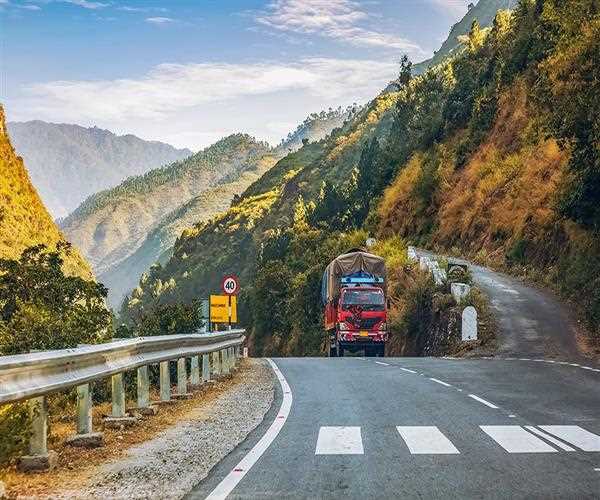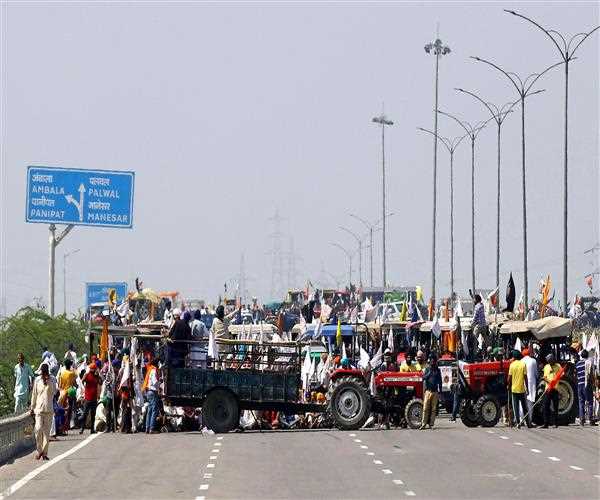
03-Aug-2023 , Updated on 8/3/2023 3:55:51 AM
Indian roads and future of travel- 2023 guide
Highlights
Indian roads are a critical part of the country's transportation infrastructure, connecting cities, towns, and villages across the vast subcontinent.
- Challenges- Indian roads face numerous challenges, such as traffic congestion, poor road conditions, inadequate maintenance, and a lack of proper traffic management.
- Improvement initiatives- The Indian government has launched various initiatives to improve the quality and connectivity of roads, including the Bharatmala Pariyojana, the Pradhan Mantri Gram Sadak Yojana (PMGSY), and the National Highways Development Project (NHDP).
- Future of travel- The future of travel on Indian roads is poised for significant changes, driven by technological advancements and societal shifts.
- Electric Vehicles (EVs)- The adoption of electric vehicles is gaining momentum, with the government incentivizing their use to reduce pollution and dependence on fossil fuels.
- Autonomous Vehicles (AVs)- Self-driving cars and other autonomous vehicles are being developed and tested, promising safer and more efficient travel in the future.
- Connected vehicles- Internet-of-Things (IoT) technology is transforming vehicles into connected devices, enabling real-time data exchange, navigation assistance, and vehicle-to-vehicle communication.
- Shared mobility- Ride-hailing services and car-sharing platforms are becoming increasingly popular, promoting a shift towards shared mobility solutions for more sustainable transportation.
- Infrastructure upgrades- Investments in road infrastructure, including smart highways with sensors and integrated traffic management systems, will enhance safety and efficiency.
- Sustainability- India is also focusing on sustainable transportation options such as cycling lanes, pedestrian-friendly streets, and public transportation enhancements.
- Hyperloop and high-speed rail- India is exploring futuristic transportation technologies like hyperloop and high-speed rail networks to revolutionize long-distance travel.
- Last-mile connectivity- Efforts to improve last-mile connectivity to public transportation hubs are underway, making it easier for commuters to reach their destinations efficiently.
- Urban planning- Smart city initiatives are influencing the design of urban road networks, incorporating technology to create more efficient and accessible transportation systems.
Overall, the future of travel on Indian roads is expected to be more efficient, sustainable, and technologically advanced, significantly transforming the way people commute and experience transportation in the country.
India, a diverse and populous country, boasts a vast network of roads that serve as the lifeline of its transportation system . With the growing population and increasing economic activities, the demand for efficient and modern road infrastructure is becoming more pressing than ever. In this article, we will delve into the current state of Indian roads, the challenges they face, and the potential future of travel in the country.
- Current State of Indian Roads
The road network in India is one of the largest in the world, spanning over 5.8 million kilometers. It connects remote villages, bustling cities, industrial zones, and trade routes, making it an integral part of India's socio-economic development. The backbone of the network is the National Highways , totaling around 142,000 kilometers, which facilitate the movement of goods and passengers across the length and breadth of the country.

However, despite its vastness, the Indian road infrastructure faces several challenges. Many roads suffer from poor maintenance, inadequate signage, and congestion, leading to increased travel times and higher accident rates. Moreover, India's rapid urbanization has resulted in a surge in the number of vehicles on the roads, exacerbating the problem of traffic congestion and air pollution.
Challenges in Indian Road Infrastructure
- Congestion and Traffic Management- Major cities in India are grappling with severe traffic congestion, leading to long travel times and reduced productivity. The lack of effective traffic management systems and outdated road designs contribute to this problem.
- Road Safety- India has one of the highest road accident rates globally. The main causes include reckless driving, poor road conditions, lack of pedestrian safety measures, and inadequate law enforcement.
- Road Quality and Maintenance- Many roads in India are in poor condition, especially in rural areas. Proper maintenance is crucial to ensuring road safety and efficient transportation, but it often receives insufficient attention and funding.
- Limited Use of Technology- Despite technological advancements, the Indian road infrastructure lags behind in adopting cutting-edge solutions such as smart traffic lights, real-time monitoring, and traffic flow optimization.
- Environmental Impact- The increasing number of vehicles on the roads contributes significantly to air pollution and greenhouse gas emissions, affecting both public health and climate change.
Future of Travel in India
While the current state of Indian roads poses several challenges, there is also tremendous potential for improvement and transformation in the future of travel. Here are some key aspects that can shape the future of travel in India-
- Infrastructure Development- The Indian government has been focusing on infrastructure development, including the construction and upgradation of highways and expressways. Investing in modern road networks with better connectivity will enhance mobility and reduce travel times.
- Electric Mobility- The future of travel in India is likely to be influenced by the adoption of electric vehicles (EVs). The government is encouraging the shift towards electric mobility through various incentives, policies, and investments in charging infrastructure.
- Public Transportation- Developing efficient and reliable public transportation systems, such as metro rail networks, high-speed trains, and buses, will ease the burden on the roads and reduce traffic congestion.
- Smart Transportation Solutions- Embracing smart transportation solutions, such as intelligent traffic management systems, real-time data analytics, and connected vehicles, can significantly enhance road safety and optimize traffic flow.
- Sustainable Transportation- Promoting non-motorized transportation options like cycling and walking, especially in urban areas, can reduce pollution, improve public health, and create a greener environment.
- Autonomous Vehicles- The advent of autonomous vehicles has the potential to revolutionize the way people travel. While the technology is still in its early stages, self-driving cars could provide safer and more efficient transport options in the future.
- Last-Mile Connectivity- Addressing the issue of last-mile connectivity , especially in urban areas, is crucial for ensuring seamless travel experiences for commuters.
- Hybrid Solutions- Combining different modes of transportation, such as intermodal hubs and ride-sharing services, can offer more flexible and efficient travel options to the public.
Indian roads play a vital role in the country's economic growth and social development. However, the current state of the road infrastructure faces various challenges, including congestion, road safety issues, and limited technological integration. Nonetheless, the future of travel in India holds tremendous potential for transformation.
Through sustainable infrastructure development, adoption of electric mobility, smart transportation solutions, and the promotion of public transportation, India can revolutionize its travel landscape. Embracing emerging technologies like autonomous vehicles and prioritizing sustainability will pave the way for a greener and more efficient transportation system.
As India progresses towards a brighter future, it must prioritize investment in its road infrastructure and address the challenges effectively. By doing so, India can create a safer, more efficient, and sustainable transportation ecosystem that benefits all citizens and enhances the overall quality of life.

SEO and Content Writer
I am Drishan vig. I used to write blogs, articles, and stories in a way that entices the audience. I assure you that consistency, style, and tone must be met while writing the content. Working with the clients like bfc, varthana, ITC hotels, indusind, mumpa, mollydolly etc. has made me realized that writing content is not enough but doing seo is the first thing for it.
Join Our Newsletter
Subscribe to our newsletter to receive emails about new views posts, releases and updates.
Copyright 2010 - 2025 MindStick Software Pvt. Ltd. All Rights Reserved Privacy Policy | Terms & Conditions | Cookie Policy